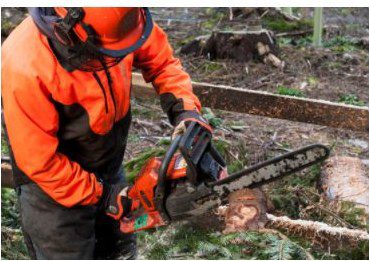Forestry and Land Scotland (FLS) has urged amateur lumberjacks who are venturing in to forests to cut up windblown trees to stay at home and leave the job to the professionals.
The call comes as staff in one Region liaise with Police Scotland about one individual who was caught with a chainsaw, cutting storm damaged trees without any safety gear, without any authorisation or any understanding of the risks to either themselves or the public.
FLS Chief Executive, Simon Hodgson, said;
“We understand that people are frustrated that many trails and forests remain closed but taking it upon themselves to venture in to the woods with a chainsaw is not helping.
“Chainsaw work, even with highly skilled and experienced people it still one of the highest risk occupations in the UK, and clearing windblown trees is the most dangerous aspect of that work. At FLS we aim to do as much windblow work as possible using mechanised harvesting machines, rather than chainsaws, to reduce risk to life.
“No matter how well-intentioned, amateur lumberjacks are putting at risk life and limb – not only their own but also those of our staff and contractors – who have to make safe the amateur efforts – and those of forest visitors who, arriving later, might think that the trail has been professionally cleared and is safe.
“Rather than ‘helping’ to open up trails more quickly, these people are making matters worse by making us divert our resources into making safe their efforts.
“We understand the desire help to re-open trails damaged by the storms. Woodlands are a valuable place for health and wellbeing. Please be patient and let the professionals do this complex and dangerous work SAFELY for everyone’s benefit.”
Dealing with windblow is time-consuming and dangerous. Felled trees, hanging trees and even trees that are still standing can all be unstable after a major storm. Trees can roll, pivot, slide or fall at the slightest disturbance. Unstable trees, parts of trees, root plates and stones can suddenly topple, tip over, fall or roll away without any visible reason even days, weeks or months after a storm.
There can be huge tension and forces both in individual trees as well as in jammed stems and root plates that need to be assessed by trained professionals before any clearance work can begin.
Staff and contractors working to clear storm damage run the risk of being crushed by a toppling, turning or rolling root plate, being struck by a stem kicking sideways, being caught by a splitting stem or getting trapped and crushed between stems.





